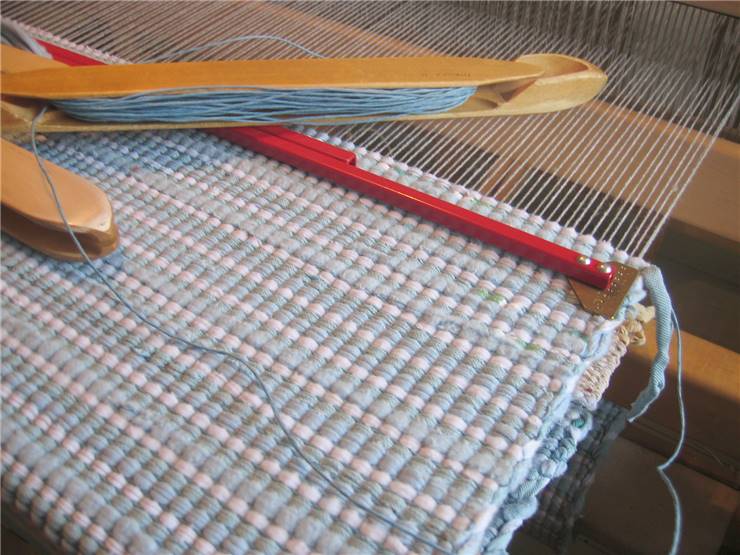History of Weaving
Weaving is technique of fabric production. It consists of intertwining of two separate yarns or threads at right angles to form a fabric or cloth. Those two threads are called warp and the weft. Fabric is usually woven on a loom which is a device that holds the warp threads in place while weft is woven through them. There are also other methods of weaving. The method where the warp and weft interlace with each other is called the weave. The basic types of weave are plain weave, satin weave and twill which give different patterns and textures of fabrics for different uses.
Humans know about weaving since Paleolithic era. Flax weavings are found in Fayum, Egypt, dating from around 5000 BC. First popular fiber in ancient Egypt was flax, which was replaced by wool around 2000 BC. By the beginning of counting the time weaving was known in all the great civilizations. Early looms need one or two persons to work on them. Bible refers to loom and weaving in many places.

By 700 AD, horizontal and vertical looms could be found in Asia, Africa and Europe. At that time also appeared pit-treadle loom with pedals for operating heddles. That kind of loom first appeared in Syria, Iran and Islamic parts of East Africa. Faithful were required by Islam to be covered from neck to ankle which increased the demand for cloth. In Africa, the rich wore cotton clothing while the poorer had to wear wool. By 1177, loom was improved in Moorish Spain with rising higher above the ground on a stronger frame. Now the weaver’s hands were free to pass the shuttle, while operating the heddles was done by the feet. This type of loom became the standard European loom. In Medieval Europe, weaving was done at home and sold at fairs. The craft spread and the guilds were established. Wars, famine and plague shifted manufacturing of fabrics from home to purpose-built centralized buildings.
Colonial America relied on Great Britain for manufactured goods so they began to weave cloth from locally produced fibers. Cotton and wool was mostly used but because of the labor-intensive process to separate the seeds from the cotton fiber, wool was used more. That changed with the invention of the cotton gin, a machine that quickly and easily separates cotton fibers from their seeds. Flax and hemp were also used as a material for fabrics. Plain weave was preferred at the time with decorations woven into the fabric or wood block printing.
Industrial revolution switched weaving from hand to machine. John Kay invented the flying shuttle in 1733 and enabled weaving of wider fabric as well as made it faster. The first factories for weaving were built in 1785. Jacquard loom was invented in about 1803. It could be programmed with punch cards which enabled faster weaving of more complicated patterns. White fabrics were printed mechanically with natural dyes at first with synthetic dyes coming in the second half of the 19th century.
